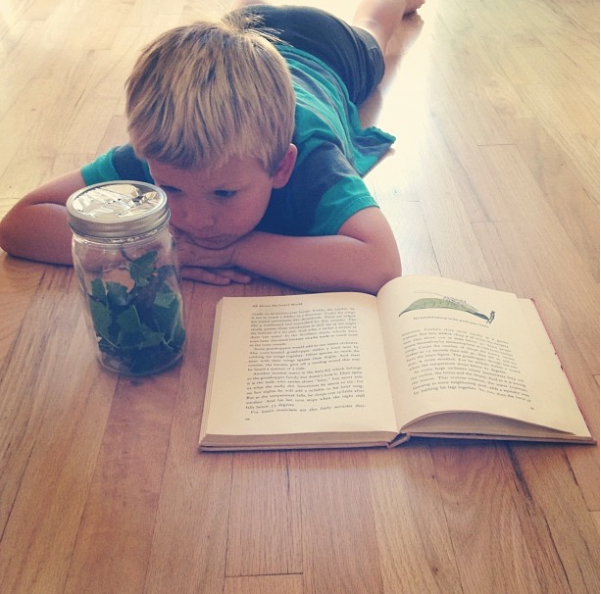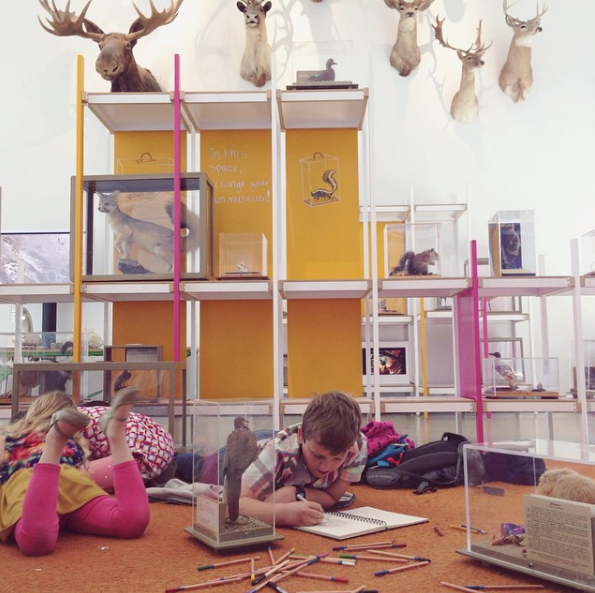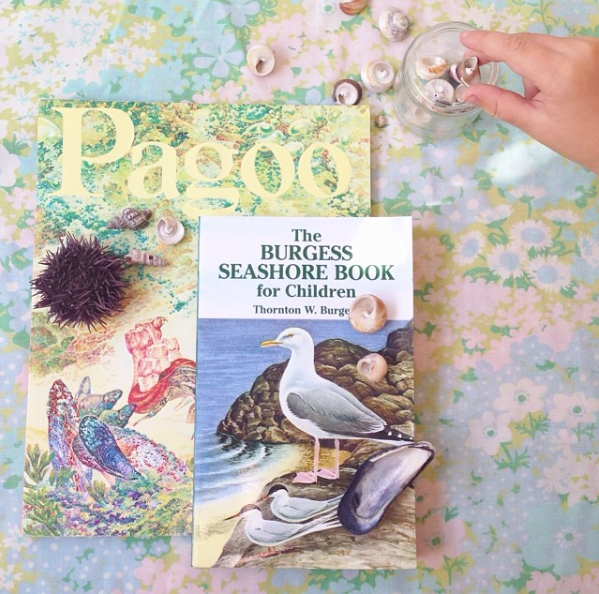It’s time for another Home Schooling 101 post!
This time I am tackling how to inspire your reluctant nature journaler.
If you are in a hurry, you can skip straight down to the how-to section near the end of the post.
You’ll find it under this heading:
“So what does it look like to offer freedom to your child as he nature journals?”
But I really hope you’ll take some time now, or later, to read through the rest of this article and really think about the WHY before you jump right to the HOW.
Its important to understand why we are doing things the way we do, and why we might need to change.
These are some of the things I’m discussing in this piece.
Please let me know what you think.
Thanks!
……………………………………………………………………………………………………………………………..
If you have spent any time reading about, learning about, or practicing a Charlotte Mason style education, then you’ve heard of nature journaling.
I mean, nature journaling is practically the holy grail of a Charlotte Mason education.
Nature journals, those beautifully sketched and painted pictures of bugs and wildflowers, acorns, and song birds–they’re what we all want our kids to create.
Nature journals are a Charlotte Mason educating mama’s street cred.
Or trail cred, as the case may be.
But what if you have a child who isn’t excited about nature journaling?
What about those unhappy moans every time you bring out that spiral bound notebook of 90 pound weight watercolor paper, the fine tip paint brushes, and the field guides for reference?
What if your child is a reluctant nature journaler?
What of your Charlotte Mason trail cred then?
Can you even be a Charlotte Mason home schooler with a reluctant nature journaler?
Or, can you not be a Charlotte Mason home schooler and still nature journal?
Yes mamas, you can.
Yes. You. Can!
I know, because I was a reluctant nature journaler myself.
And I get a fair amount of guff about it from some of my fellow Charlotte Mason mamas who love nature journaling and excel at it. (you know who you are)
So I write this post with a understanding for where your reluctant nature journaler is at.
And sympathy for his frustration with nature journaling.
And also with a bit of pointed playfulness.
Because I think sometimes we mamas/schoolteachers need to relax a little bit.
We need to remember that learning should be a thing of joy, not a chore or tear filled session of frustration.
We can’t get so caught up in the way things are supposed to be, that we lose sight of why we are doing them in the first place.
If you’ve read some of my pieces on home schooling, you know I am big on finding your why.
Often times we are so ready to get started, to see results, and to prove to ourselves that our kids are learning something, that we miss a very important first step.
Before we worry about how our kids should be nature journaling, and how their nature journals should look, we need to be clear on why we want them to nature journal.
Why does nature journaling matter?
And in order to answer that question, we first have to talk about nature study.
Because before nature journaling can happen, our children must engage in nature study.
Nature study is a truly unique and wonderful way to study the natural sciences.
It is one of the best ways I have found to make the subjects of biology, botany, physical geography, geology, entomology, and so many other “ologies” come alive, for both me and my kids.
Nature study is the close observation of many different subjects in nature.
It is the research and identification of the thing observed.
It is getting to know nature on an intimate level.
These are the reasons nature journaling matters.
And once nature study has happened, then nature journaling is the natural next step for continuing with the learning.
Let's delve into this WHY a little further and read what Charlotte Mason, our nature study guru, has to say about why nature study and nature journaling matter:
(taken from Volume One of the Charlotte Mason series found here)
“Adults should realize that the most valuable thing children can learn is what they discover themselves about the world they live in. Once they experience first-hand the wonder of nature, they will want to make nature observation a life-long habit. All people are supposed to be observers of nature and there’s no excuse for living in a world so full of amazing plants and animals and not be interested in them.”
“Besides appreciating the world, observing nature develops other mental powers–ability to focus, to tell things apart, to patiently seek answers. These things are useful in every facet of life.
“The ability to group things together by type and find differences is one of the higher orders of intellect, and every opportunity to use it first-hand should be encouraged. Learning classifications from a book takes no mental power, except maybe rote memory. If the skill of rote memory is deemed necessary, then the child might just as well memorize some phrases in a foreign language to satisfy that requirement!”
“Children can learn an unlimited amount of things that they’ll never forget before even beginning school. A child is ten times better off if he knows where to find the prettiest birch trees, or the four best ash trees in his neighborhood, than a boy who doesn’t even know the difference between an elm and an oak. He is not only likely to be more successful, but happier, too, because the beauty of nature affects our feelings. Dr. Carpenter said that, when our minds have contact with nature, our sense of sublime beauty and order is touched”
“A passion for natural objects can be like a wellspring of refreshment to a dry heart.”
Wow! That is some good stuff right there.
Let me summarize the important reasons Charlotte Mason says children should engage in nature study and journaling:
*Nature study creates a sense of wonder and interest in the natural world.
*Nature study builds the skills of observation, focus, patience, and higher order thinking skills, such as classification.
*Nature study connects children with beauty, therefore making them happier.
*Nature study requires time spent in nature, which brings refreshment to a child’s heart and soul.
I’ll add my own reasons for having my children take part in nature study:
*Nature study allows for meaningful interaction between my children and nature.
*Nature study creates meaningful connections between my children and nature.
*Nature study encourages further learning.
*Nature study brings them excitement, peace, and joy.
*Nature study makes learning science fun.
I encourage you to think through your own reasons for having your children engage in nature study.
Spend some time making a list, and really think about your WHY.
For me, knowing all the good that comes of nature study, there is simply no excuse for not incorporating it into my children’s’ education.
And, once we’ve engaged in nature study, to have them engage in nature journaling.
It is the natural next step.
But that brings us back to my original question, what of the reluctant nature journaler?
I am going to guess that your reluctant nature journaler isn’t reluctant to study nature, just to record those studies.
So you have already won half your battle.
If you are out in nature and observe a coyote or a gopher snake, your reluctant nature journaler probably won’t turn his head in disinterest.
And I bet, once home, he’ll sit and listen as you read to him some interesting tidbits about the life of the coyote and the gopher snake.
Now you are already well on your way to helping him begin nature journaling.
You may just have to change the way you let him do it.
You might have to let go of the how and instead embrace your why.
Here is what Charlotte Mason has to say about your child’s nature journal; (emphasis is mine)
“The children keep a dated record of what they see in their nature note-books, which are left to their own management and are not corrected. These note-books are a source of pride and joy, and are freely illustrated by drawings (brushwork) of twig, flower, insect, etc.” (Volume 3 pg 236)
Please observe that the notebooks are theirs.
That they should feel pride and JOY in them.
Nature journaling should not be drudgery.
It should be interesting, and engaging — a time of happy study.
My children have loved nature journaling since I first introduced it to them.
But they have always loved drawing and making art, and have done so since they were 3 and 4 years old.
Therefore, getting them to draw in their nature journals was never a problem.
Through the process of nature journalling I do offer advice and instruction, “study all the colors and shadows on this rock. It’s not just brown. And look at its shape. Its not a perfect circle, is it?”
And I am almost always the one to suggest they nature journal.
But once they get going, they do enjoy sketching and drawing what they’ve seen out in nature.
“So why”, you are asking, “do you consider yourself equipped to write about a reluctant nature journaler?”
“What is your experience with this struggle?”
My experience?
Easy.
I’m a reluctant nature journaler myself.
I don’t enjoy drawing.
I don’t enjoy painting.
I feel stress and anxiety when I attempt it.
I do not feel peace, and certainly not joy.
And I know plenty of kids who feel the same way.
That’s why I wanted to write this piece.
I hate to think of you and your kiddos battling through nature journaling when it really doesn’t ahve to be that way.
When nature journaling becomes a battle, all that wonderful learning that has taken place through nature study gets lost.
And it is simply because your child is struggling to record his learning in the way you think he’s supposed to.
Let’s change that!
So what does that look like?
Yes, it is finally time to think about the HOW!
Well, almost time.
First, let me share how I came to understand that nature journaling could take many different forms and still be completely viable.
It was a real light bulb moment for me, and I hope it will be for you too.
Not very long ago I was talking about my own nature journaling inadequacies, making fun of myself, but still wishing deep down inside that I was a “real” nature journaler.
My wise friend, Jen, disagreed with me.
She said the pictures I take of the things we study in nature, and then the writing I do about those things are my nature journal.
They aren’t kept in a book–they’re on Instagram.
They aren’t beautiful paintings or drawings–they’re pictures I took with my iphone,
They words aren’t hand lettered on a page–but they are excitedly researched and lovingly crafted into stories.
They aren’t the way Charlotte Mason describes nature journals at all!
But they’re still nature journals.
They look different.
But they’re still the real thing.
I felt so validated.
(yes, even a 39 year old mom needs that sometimes)
What a gift my Jen-girl gave me.
And what an understanding it opened for me for all the other reluctant nature journalers out there.
Kids, and mamas, too.
This revelation changed the way I thought about nature journaling.
As home schoolers, we have the wonderful freedom to change our children’s education so that it fits them best.
What a gift that is!
We must not forget to offer our children freedom in learning in our quest to do things only in the way which we think they should be done.
So what does it look like to offer freedom to your child as he nature journals?
*It means you study your child and find out where he struggles.
And then you:
*might put away the pens, the colored pencils and the paint brushes.
*might give her a camera while she is on the trail, and instructions to take photos of the things that capture her interest.
*might print out some of those photos and let her study them.
*might talk about what she sees in the photo, or simply saw out on in nature, just as you would if she were preparing to draw or paint them.
*might look at colors, shapes, and the environment that the item grew in.
Or:
*your child can collect items found along the trail and preserve them in her nature journal.
*wild flowers and leaves can be pressed between the pages of a heavy book and then glued or taped in her journal.
*lizard skins and butterfly wings can be kept in places of honor on her dresser to to be looked at and admired for many days to come, and then carefully placed in a ziplock bag and stapled in her nature journal.
There are so many different ways to fill a nature journal!
Once the photographing, collecting, and observing have been done, then the research can happen.
I find that my kids and I always want to know more about the things we see and bring home from our hikes.
We want to know the names of things, and how they grow and what they eat, and what their songs sound like.
So we:
*listen to bird songs online
*we read books, field guides, and look at countless pictures on line to determine exactly which yellow breasted bird we saw in that tree
*we closely study the leaves and petals of wild flowers to identify and name them.
*we collect acorns and leaves and use them to help us learn about the many varieties of trees..
*I look for information in the books on our shelves that describe the various plants, birds, and animals we’ve seen and read those pieces aloud to my kids.
The research is an extension of the nature study and a valuable part of our nature journaling.
But perhaps your child isn’t thrilled with research.
Ask yourself why?
Are you giving him a stack of books and setting him to work all on his own?
Have you ever tried distinguishing one yellow breasted bird from another?
Its tedious!
Perhaps your child needs you to sit down next to him.
Perhaps he needs you to research with him.
You have the freedom to do that!
We always do our research together.
We share our discoveries and that makes the learning more exciting.
My kids, even my older ones, would not thrive if I set them before a stack of books and field guides and said, “now identify all the things we saw on our hike yesterday.”
We are working toward that goal, but in the meantime, they still need my help.
They need my encouragement.
And my goal right now is that they would enjoy the process of researching, rather than just get it done.
The last piece of our nature journaling for us is the writing.
And while my kids do love making art in their journals, they haven’t always loved the writing.
Sometimes there have been tears or great frustration.
So I have made adjustments along the way to get them to the place where they are writing in their journals and it isn’t a tear filled experience along the way.
Here’s what that looked like:
*at first, they just labeled the things they saw.
*all additional research was discussed orally and was not written in their journals.
*later, they narrated one or two sentences about the things we researched, I wrote it down, and they copied what I wrote.
*next, they had to write their own sentences, and if they needed help, I was right there.
*finally, some of my kids could compose their own paragraphs, synthesizing the information we’ve learned together, and putting it down in their journals.
But it took us a while to get there.
And if that had been my expectation in the beginning, or even later when I was sure they were ready, there would have been tears and resistance.
There would have been reluctance.
And that is never our goal.
You see, the point of nature journals is not to teach our kids to be great artists.
Or great writers.
Nature journals are about getting our kids to enjoy nature.
Nature journals should be the natural outpouring of the excitement they felt doing nature study.
Their nature journals should be a place where they remember exciting hikes, and discoveries, special trips and new learnings.
Nature journals, whatever they look like, should be a treasure that your child can look back on and enjoy for years to come.
And if you allow your reluctant nature journaler the freedom to find his own way to nature journal, then that will happen.
And you will have given him a great gift.
I so hope you’ll try.
And I’m wishing you all the best on your journey,
Greta
A few of my favorite books to use for research during nature journaling:
The Burgess Bird book by Thornton Burgess
The Burgess Sea Shore book by Thornton Burgess
The Burgess Animal book by Thornton Burgess
Pagoo by Holling Clancy Holling
Minn of the Mississippi by Holling Clancy Holling
Sea Bird by Holling Clancy Holling
John Muir’s Book of Animals by John Muir
Nature Anatomy by Julia Rothman
Farm Anatomy by Julia Rothman
Animalium by Jenny Broom
Golden Nature Guides
How and Why Wonder books
Any of the vast collection of vintage books I’ve collected on all things nature.








